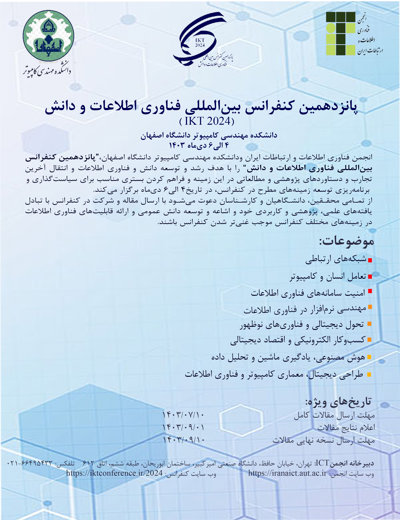0% Complete
Authors :
Keywords :
Abstract :
List of archived papers
Dr Zahra Razaghi Moghadam Kashani - Dr Ali Masoudi-nejad - Dr Abbas Nowzari-dalini
Hosein Mohammadi Firozjae - Javad Zeraatkar Moghaddam - Mehrdad Ardebilipour
دکتر راضیه شیخ پور راضیه شیخ پور -
مهدی صیادجو - محمدجواد فدائی اسلام
Nargess Vafaei - Dr Mohammad Reza Keyvanpour
Dr Hamid Jazayeriy - Mohammad Daryani
علی روحانی فر - کمال میرزایی بدرآبادی
محمد نصرتی مقدم - حسن حقیقی - مجتبی وحیدی اصل
Nasim Alikhani - Abbas Mohammadi
Mohammad Hassan Heydari - Arshia Hemmat - Erfan Naman - Afsaneh Fatemi





